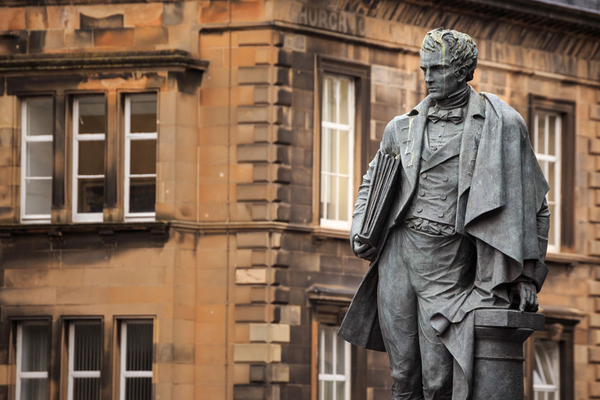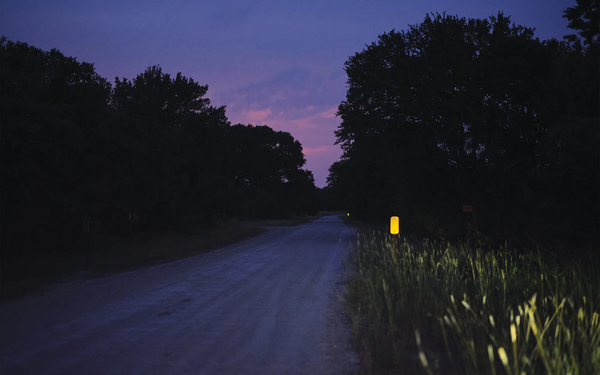AI recreates images based on MRI brain scans

Researchers found that they could reconstruct high-resolution and highly accurate images from brain activity by using the popular Stable Diffusion image generation model, as outlined in a paper published in December. The authors wrote that unlike previous studies, they didn’t need to train or fine-tune the AI models to create these images. The researchers—from the Graduate School of Frontier Biosciences at Osaka University—said that they first predicted a latent representation, which is a model of the image’s data, from fMRI signals. Then, the model was processed and noise was added to it through the diffusion process. Finally, the researchers decoded text representations from fMRI signals within the higher visual cortex and used them as input to produce a final constructed image.
The quest to restore Notre Dame’s sound
Looking up at the catheral's nave, there are three holes where the spire fell. Much of the cathedral’s restoration, projected to be completed in 2024, will address these large holes. They affect not just the structure of the building, but also something that cannot be seen: the acoustics. “Notre Dame has lost about 20 percent of its acoustics,” says Mylène Pardoen, who is the co-director of the acoustics team working on Notre Dame — under the aegis of the French Ministry of Culture and the Centre National de la Recherche Scientifique (C.N.R.S.), a research organization from whose ranks specialists have been drawn for the restoration. The holes caused a measurable decline in the glorious resonances that gave the building its unique sound.

Mysterious new behavior seen in whales may be recorded in ancient manuscripts
In 2011, scientists recorded a previously unknown feeding strategy in whales around the world. Now, researchers in Australia think they may have found evidence of this behavior being described in ancient accounts of sea creatures, recorded more than 2,000 years ago. They believe that misunderstandings of these descriptions contributed to myths about medieval sea monsters. Whales are known lunge at their prey when feeding, but recently whales have been spotted at the surface of the water with their jaws open at right angles, waiting for shoals of fish to swim into their mouths. A clip of this strategy was captured in 2021 and went viral on Instagram.

Corridor discovered in Great Pyramid could be protecting the actual burial chamber
Scientists have discovered a hidden passage inside Egypt's Great Pyramid, the authorities announced on Thursday, part of a seven-year international research project. The passage is 9 meters (30 feet) in length and more than 2 meters in width, the antiquities ministry said in a statement. Egypt's Tourism and Antiquities Minister Ahmed Issa told reporters at the ancient site in Giza also known as the Khufu, or Cheops, pyramid, that the "gabled corridor" with a triangular ceiling "was found on the northern face of the Great Pyramid of King Khufu". The discovery was part of the ScanPyramids project, launched in 2015 as a collaboration between major universities in France, Germany, Canada, and Japan and a group of Egyptian experts.

The anatomical collection of a man who changed the world of modern surgery
The Hunterian Museum has an amazing anatomy and pathology collection amassed by John Hunter; an anatomist, obstetrician, doctor, naturalist, and dedicated collector of oddities who lived from 1728 to 1793. The museum houses one of the oldest collections of anatomical, pathological, and zoological specimens in the United Kingdom. One half of the brain of the famous mathematician Charles Babbage is on display. The surgical instruments carried by doomed Scottish explorer Mungo Park are also in the collection. But the specimen with the most interesting story is the skeleton of 7’7” tall Charles Byrne, known as the Irish giant. Byrne had requested to be buried at sea to prevent just such a posthumous showing. Hunter, ever the determined doctor, managed to bribe the undertaker, purchased the giant’s body, boiled off the flesh in a giant cauldron, and articulated the huge skeleton for display.

President of Mexico posts a photo of what he says is an elf
Mexico’s president posted a photo on his social media accounts showing what he said appeared to be a mythological woodland spirit similar to an elf. President Andrés Manuel López Obrador did not seem to be joking when he posted the photo of an “Aluxe,” a mischievous woodland spirit in Mayan folklore. López Obrador wrote the photo “was taken three days ago by an engineer, it appears to be an aluxe," adding “everything is mystical". According to traditional Mayan belief, “Aluxes” are small, mischievous creatures that inhabit forests and fields and are prone to playing tricks on people, like hiding things. Some people leave small offerings to appease them. The ancient Mayan civilisation reached its height from 300 AD to 900 AD on the Yucatan Peninsula.

Snow and ice cause chaos in Tahoe
It’s absolute madness in Tahoe right now. (via @og_tahoe_memes/IG) pic.twitter.com/91m7Jgu7Sw
— Active NorCal (@ActiveNorCal) March 5, 2023



